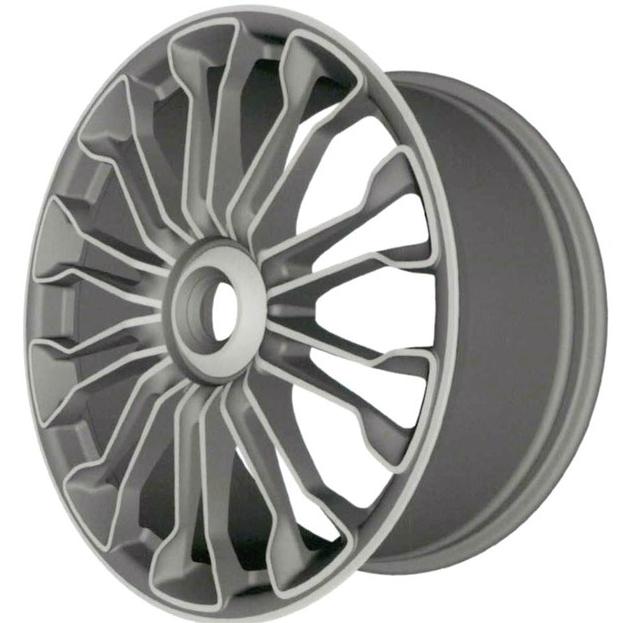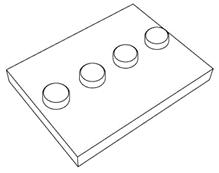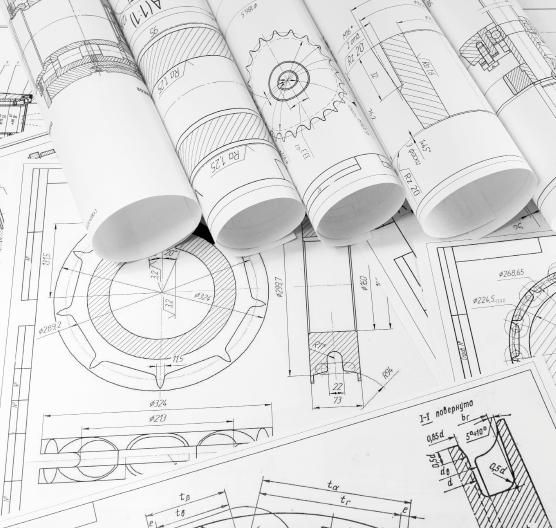
17 minute read
Design protection of spare parts
In the previous edition of Inside IP we discussed some of the limitations on the protection of components (including spare parts and consumables) under the United Kingdom and European Union Community design regimes. We looked at the visibility requirement for component parts of complex products and also the exclusion of features that are dictated purely by technical function. In this follow-up article, we will now explore the “must-fit” and “must-match” exclusions and the repair clause.
Overview of different design regimes
Advertisement
To recap, the various UK and EU Community design regimes can broadly be put into three categories:
1. Registered design rights, namely the UK Registered Design (UKRD) and Registered Community Design (RCD), which remain mostly harmonised although the UK now has the option to deviate from EU law (and aspects of both the UK and EU design systems are currently under separate review).
2. Unregistered rights based on the Community system, namely the Unregistered Community Design (UCD), the UK Continuing Unregistered Design (UKCUD) (which provides continuing protection in the UK for UCDs that came into force before the end of the Brexit transition period in January 2021), and the UK Supplementary Unregistered Design (UKSUD) (a new right that mirrors the provisions of the UCD to provide a corresponding scope of protection in the UK).
3. The UK Unregistered Design Right (UKUDR), which is quite different to the other design systems discussed above and more closely resembles UK copyright law.
This article does not consider other forms of IP rights that may be relevant to the protection of components, including patents, copyright, and trademarks, and we will not look at the various national design rights that are available in individual EU Member States.
Must-match exclusion
The UK unregistered design right does not protect “features of shape or configuration of an article which… are dependent upon the appearance of another article of which the article is intended by the designer to form an integral part” (section 213((b)(ii) of the Copyright, Designs and Patents Act 1988). This is known as the “mustmatch” exclusion because it excludes from protection features of an article that are necessary to aesthetically match with another article. The exclusion only applies to these mustmatch features and therefore other features of the article would not be excluded from design protection.
To give an example of the mustmatch exclusion, take the case of a car body panel – the features of the panel that are necessary to match with the remainder of the vehicle would be excluded from protection. The idea behind this is to prevent manufacturers from having a monopoly on the sale of spare parts. In the example above, a consumer would want a replacement body panel to match the vehicle. Granting a vehicle manufacturer design protection to such features of the panel would, therefore, essentially give the manufacturer a monopoly on the aftermarket sale of spare parts, which is viewed as being anticompetitive.
Repair clause
The Community Designs Regulation 6/2002 (CDR) (which gives rise to RCDs and UCDs) at Article 110 states “protection as a Community design shall not exist for a design which constitutes a component part of a complex product… for the purpose of the repair of that complex product so as to restore its original appearance”. As such, in contrast to the UKUDR discussed above, must-match features are protectable under the Community registered and unregistered systems, but it is not an infringement for a third party to reproduce such features for the purposes of repairing a complex product to its original appearance.
Whether or not must-match features should be subject to design protection was a contentious issue at the time the Community design laws were drafted, with particular pushback from the automotive industry. The repair clause that made it into the final legislation can be viewed as a watered-down version of the mustmatch exclusion and, as we will see below, is applied relatively narrowly by the courts.
The Community Designs Directive 98/71/EC (Designs Directive) (which is implemented by EU Member States to give rise to national registered design rights) does not include a corresponding repair clause or mustmatch exclusion. Instead, Article 14 of the Directive states that “Member States shall maintain in force their existing legal provisions relating to the use of the design of a component part
used for the purpose of the repair of a complex product so as to restore its original appearance and shall introduce changes to those provisions only if the purpose is to liberalise the market for such parts”. This means that individual EU Member States can remove or weaken any must-match exclusion and/or strengthen any repair clause that is already in place, but are prohibited from doing the opposite. This is therefore an area where EU design law between EU Member States is not harmonised. For example, in 2021, France finally introduced a repair clause for suppliers who had originally manufactured a component on behalf of vehicle manufacturers, as well as a repair clause for all vehicle glazing components, and limited the term of protection for other types of vehicle components to ten years (rather than the usual 25 years). In contrast, several EU Member States, such as Portugal and Romania, still do not have a repair clause.
The UK enshrined the repair clause at section 7A(5) of the UK Registered Designs Act 1949 (although the UK now has the power to remove the clause). However, there is no such repair clause for the UKSUD that was introduced following Brexit to mirror the protection afforded by the UCD. This is interesting because the UCD does include a repair clause. Third parties seeking to repair/restore an article in the UK and looking to rely on the repair clause to avoid infringement of a UKRD will therefore need to consider very carefully whether they would nevertheless still infringe the corresponding UKSUD (and which, being an unregistered right, subsists automatically).
Porsche’s RCD no. 001343982-0001 The CJEU examined the scope of the repair clause in the joined cases of Acacia v Audi/Porsche (C-397/16 and C-435/16). Acacia sold wheel rims that fell within the scope of RCDs owned by Audi and Porsche but argued that the sale of the wheel rims was exempted by the repair clause and thus there was no infringement.
The Court held that a component part must have an identical appearance to the part that it is replacing in the complex product (i.e. the wheel rims would need to be identical with those being replaced) in order to fall within the repair clause. The Court also ruled that a third party selling such a spare part has a duty of diligence to inform the downstream user (e.g. on the product, packaging, and/or catalogue) that the part incorporates a design of which they are not the holder and is intended exclusively to be used for the purpose of the repair of the complex product so as to restore its original appearance. The third party also has a duty of diligence to ensure through appropriate means (e.g. contractual obligations) that downstream users do not intend to use the component parts in a way that is not for the purposes of repair, and the third party must refrain from selling the part where they know or ought reasonably to know that it will be used for any other purpose. In the present case, the fact that Acacia had stamped “not OEM” on the rims and had indicated that the rims were sold for repair only was ultimately not deemed sufficient to comply with these duties and therefore the sale of the rims infringed the RCDs.
Must-fit exclusion
Another provision that affects the protection of spare parts is the “mustfit” exclusion. Article 8(2) of the CDR recites “a Community design shall not subsist in features of appearance of a product which must necessarily be reproduced in their exact form and dimensions in order to permit the product in which the design is incorporated or to which it is applied to be mechanically connected to or placed in, around or against another product so that either product may perform its function”. This exclusion is common to all of the registered and unregistered design regimes we have discussed so far. that are required to interconnect with another article. A common example is that of a plug and socket, wherein the three (or two, depending on where you are reading this from!) prongs of a power plug and corresponding socket holes are necessary to enable an interconnection and thus would be excluded from design protection. The exclusion only applies to the features that fall within the must-fit provision, and therefore a design may nevertheless be valid if it includes other features that contribute to the novelty and individual character of the article.
It is easy to see how the must-fit exclusion is relevant to the protection of spare parts. Returning to our vehicle analogy, a fastening feature of a car wheel rim that mates with a corresponding fastening feature of the wheel would be excluded from protection, while the remaining features of the wheel rim would not be excluded from protection under the must-fit provision.
Exemption for modular systems
Interconnecting features of modular systems are exempted from the must-fit exclusion, with Article 8(3) of the CDR reciting “Notwithstanding paragraph 2 [the must-fit exclusion], a Community design shall under the conditions set out in Articles 5 and 6 subsist in a design serving the purpose of allowing the multiple assembly or connection of mutually interchangeable products within a modular system”. Therefore, features of interchangeable products that are necessary to interconnect with other products in a modular system can be protected. As an example, the features of stackable garden chairs that allow for the chairs to be stacked on top of each other would likely fall within the exemption and thus would be protectable because each chair is arguably an interchangeable product.
Interconnecting features of a product that fall within the must-fit exclusion under Article 8(2) CDR may also fall within the Article 8(1) CDR exclusion which, as we discussed in our previous article, prohibits the protection of features that are solely dictated by technical function. Indeed, the function of allowing for a part to be interconnected to another part can be viewed as being
inherently technical in nature, albeit the feature may still not fall foul of the exclusion if it can be demonstrated that the feature is not dictated solely by technical function (i.e. if there were aesthetic considerations that went into the design of the feature, following the CJEU decision in Doceram v CeramTec, C-395/16, that we looked at previously).
The interplay between the must-fit and technical function exclusions was explored by the EU General Court in Lego A/S v EUIPO (T-515/19). In this case, the European Union Intellectual Property Office Board of Appeal had previously found that Lego’s RCD to a toy building brick was invalid. The Board of Appeal identified the following features of the design: (i) the row of studs on the upper face of the brick; (ii) the row of smaller circles on the lower face of the brick; (iii) the two rows of bigger circles on the lower face of the brick; (iv) the rectangular shape of the brick;

Lego’s RCD No. 1664368-0006 (v) the thickness of the walls of the brick; and (vi) the cylindrical shape of the studs. The Board of Appeal held that all of the features were solely dictated by the technical function of the building brick, namely assembly with/disassembly from other bricks of the set, and that therefore the RCD was invalid in view of the Article 8(1) technical function exclusion.
On appeal to the EU General Court, it was found that the design was in fact valid because the Board of Appeal had overlooked creative aspects of the RCD, in particular the smooth surface on either side of the row of four studs on the upper side which were not dictated solely by technical function and thus did not fall within the technical function exclusion. More interestingly, the Court also held that the benefit of Article 8(3) (i.e. the modular system exemption) could be relied on in respect of all interconnection features that fall within Article 8(2) (the must-fit exclusion), even if these features would otherwise fall foul of Article 8(1) (the technical function exclusion). The decision therefore appears to significantly increase the protection afforded to modular components, and has scope to allow for interconnecting features of this special category of components to be protected even if no aesthetic considerations went into creating such features, which seems to run contrary to the entire purpose of the design system.
Final considerations
The design system remains a powerful tool for the protection of components, but rights holders will need to carefully consider each of the exclusions when preparing design applications and when enforcing the various design rights available under the UK and Community systems. As we have seen, there are a number of different exclusions from design protection, and this remains a complex area of design law.
It is also important to remember that for registered designs it will usually be highly preferable to file an application showing the component in isolation (rather than the entire product incorporating the part) if protection is desired to the component per se. In contrast, the CJEU has ruled that UCD protection for a component part

Ferrari FXX K
can subsist automatically even if the component is only publicly disclosed along with the product into which it is incorporated. This was confirmed in Ferrari SpA v Mansory Design & Holding GmbH C-123/20, in which published images of Ferrari’s FXX K supercar were deemed sufficient to establish UCD protection to the V-shaped element on the bonnet.
For third parties, great care should be taken before relying on the exclusions or repair clause as a defence against infringement of design rights, particularly in view of the relatively narrow interpretation of many of the provisions and the fact that several different rights may be in play, some of which do not include certain defences (for example, the repair clause is omitted from the UKSUD and the national registered design rights of a number of EU Member States).
Finally, the outcome of the EU Commission’s review of the Designs Directive is due later this year. It will be interesting to see if the Commission recommends harmonising the spare parts provisions for national registered design rights, and we will be sure to report the outcome in due course.
George Hudson
ghudson@vennershipley.co.uk
Venner Shipley news

Venner Shipley crowned one of the winners of European Impact Cases of the Year at the 2022 Managing IP Awards
We have been awarded one of the European Impact Cases of the Year at the 2022 Managing IP Awards, for our work on G1/19 (EPO).
The annual awards are presented to firms, individuals and companies behind the most innovative and challenging IP work of the past year, as well as those driving international markets. The European Impact Cases of the Year awards recognises standout cases across the whole of Europe that have created a lasting impression within the industry, driving change and influencing future decisions.
Managing Partner, Pawel Piotrowicz has played an intrinsic role in G1/19, one of the most followed, high-tech European, Enlarged Board of Appeal cases held over the last two years. His early involvement and advisory role in the case means that he is the go-to patent attorney on the patentability of computer-implemented simulations.

Directory Results
Tier 1| Patents
For the fourth year in a row, we have maintained our Tier 1 ranking for patents in the 2023 edition of the Legal 500. We also achieved recognition for our trade mark attorney team, and for our legal team for patents (contentious and non-contentious), and trade marks, copyright & designs.
Ranked
Chambers UK has once again ranked Venner Shipley in its 2023 edition. Clients comment that “Venner Shipley are very good at managing complex IP work in a timely manner. They are clear in communicating the nuances of current and future protection to various stakeholders.”
IP legal case law roundup
Our legal team regularly provides updates on various cases covering a wide range of industries and technical areas. A round up of the most recent ones are:
• Entitlement and The
Importance of Assignment
Formalities – lessons from
Jones v Irmac Roads • C-C-C-Combo Breaker! –
Combination products and the SPC regulation • Only Fools and Copyright – Is there Copyright in Fictional
Characters? • Patents Court confirms power to grant injunctions for patents prior to grant – but not in this case, and maybe no others either…
• Expert Witnesses in Patent Cases – What’s Happening?
Subscribe here to hear more
Ranked
We have once again been ranked in IAM Patent 1000: The World’s Leading Patent Practitioners for Litigation and Prosecution in the UK, as well as being recognised for our success at the European patent office.
Could your invention be in with a chance of a £1 million Earthshot prize?
Launched by The Royal Foundation of the Duke & Duchess of Cornwall and Cambridge in 2021, the Earthshot Prize launches a global search for eco-innovators with solutions to the five ‘Earthshot’ goals every year between 2021 and 2030. These are simple but ambitious goals grounded in science, which if achieved by 2030 will improve life for us all for generations to come. Not only will the breakthrough emergent solutions help to repair and regenerate the planet, the Award will also nurture the eco-innovators to grow their impact.
The five winners chosen each year will be awarded a one million-pound prize, helping move forward at least 50 solutions to the world’s greatest environmental problems by 2030. The five Earthshot objectives and awards categories are:

• Protect and restore nature • Clean our air
• Revive our oceans • Build a waste-free world
• Fix our climate
The Prize aims to turn the current pessimism surrounding environmental issues into optimism, by highlighting the ability of human ingenuity to bring about change, and inspiring collective action.
With the 2022 prizewinners announced, the nomination process for 2023 is about to kick off soon so it is a great opportunity to get your IP secured as alongside numerous other aspects intellectual property is one of them.
The Chartered Institute of Patent Attorneys (CIPA), which is an official nominating body for the prize, plays a vital role in advising the Earthshot organisers on all intellectual property issues and states that: "Nominations must be beyond idea stage, have tested their solution in-field or with target audiences and must be at a ‘tipping point’ for scaling their impact within the next five years. Therefore, the best nominees will likely be close to the end of the patenting process, or already have patents in place." This includes performing due diligence on the finalists and providing advice on intellectual property issues.
The Earthshot website outlines how: "The selection process will prioritise solutions that are beyond idea stage, with working prototypes or proven effectiveness, ready to be scaled or replicated rapidly. Nominations are assessed in terms of the inspiring stories behind them, their inclusivity, equity and benefits for humans, their impact on the Earthshots, and the ability for this impact to be scaled."
We are keen to put our clients and contacts forward and whereas, the Earthshot Award should not be the only reason for protecting your intellectual property, the £1 million prize money is certainly an incentive and we are looking forward to providing you with a free initial consultation and put you forward for an award.
Exam Success
We are delighted to announce exam success for our associates on what continues to be a great year of exam results for our firm.
Congratulations to Associates, Emma Bridgland, Andy Heap, Robert Holbrook and Nusrat Rahman who are now fully qualified European Patent Attorneys. Nusrat and Andy are also now dual qualified, having both UK and European qualifications.
Partner, Jonathan Hewett comments: “It is great to announce we have had further exam success from our associates in what has been one of best years for exam results. We are extremely proud to be able to support and nurture internal talent, with their hard work recognised in these great results. Well done all!”






© Venner Shipley LLP 2022
This newsletter is for general information for our clients. Its contents are not a complete statement of the law on any subject. Professional advice should be sought before any course of action is pursued.










